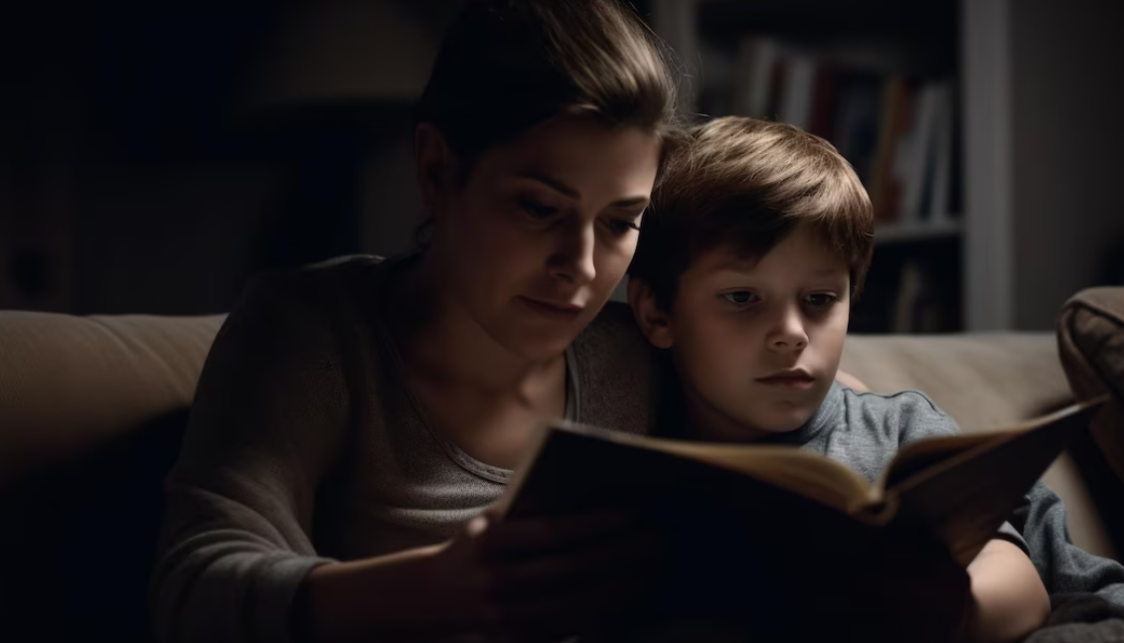
For countless millennia, storytelling has been an integral part of human life, shaping our societies and cultures. Although we cannot pinpoint its precise origins, we can trace its evolution through history by examining the various mediums that have adapted to our development.
In his book “Sapiens,” Yuva Noah Harari highlights how our distinct ability to believe in stories distinguishes us from other creatures. Monkeys, for instance, cannot be persuaded with promises of posthumous banana rewards. Thus, storytelling remains a constant pillar, guiding our perceptions of morality and truth.
Across the tapestry of human societies, storytelling can be found in the form of myths, legends, and, most commonly, religion. Our innate craving for narratives transcends age, with the simple phrase “Tell me a story” echoing as a recurring mantra in our daily lives.
This unyielding human desire for entertainment has fueled the evolution of storytelling, progressing from visual to oral, written, and now, digital formats. As we continue to indulge in stories, this ancient tradition endures as a timeless expression of our collective human experience.
The Evolution of Visual Storytelling: A Journey of Over 36,000 Years
- Visual storytelling boasts a rich and ancient history that spans approximately 36,000 years;
- Early records of art discovered in the Chauvet caves of southern France offer a glimpse into humanity’s capacity to reflect on and anticipate events through visual expression.
As civilizations evolved, art became a powerful medium for passing down history and legends, communicating narratives through imagery. From the majestic Egyptian pyramids to the intricate depictions on ancient Greek vases and frescoes, from the ornate Chinese tapestries to the evocative statues, canvases, and photographs of various cultures, visual storytelling has continuously adapted and thrived.
In the modern era, the advent of film and photography has represented the latest stage in the evolution of visual storytelling, elevating our entertainment experiences to new heights. The introduction of selfies has revolutionized communication, offering a unique and personal way for individuals to share their stories with the world. Moreover, video platforms like Netflix have made storytelling accessible with a simple click, providing an abundant array of captivating narratives at our fingertips.
With countless stories captured in images throughout history, it appears that we have an endless well of entertainment and knowledge to draw from. Visual storytelling continues to be an integral part of our cultural heritage, preserving the essence of human experiences and emotions across time and space. As technology progresses, we can expect visual storytelling to evolve further, unveiling new and innovative ways to connect and share our stories with the global audience. The enduring legacy of visual storytelling reminds us of the profound impact images have had on shaping our understanding of the world and our place within it.
The Rich Legacy of Oral Storytelling: Over 50,000 Years
- Though the exact origins of oral storytelling remain uncertain, it is believed to be one of the oldest forms, emerging with the birth of speech estimated between 50,000 to 2 million years ago.
Despite its ancient roots, oral storytelling remains a beloved and enduring practice in our lives, fulfilling our innate need for connection and understanding.
Among the most renowned oral storytellers in history are the aboriginal Australians, whose rituals date back between 18,000 and 7,000 years. Their storytelling traditions, like the Dreamtime narratives explaining the world’s creation, have been passed down through generations, using voice and dramatization to convey the stories’ essence.
Throughout history, the art of communication has included pacing, pauses, comedy, and drama, elevating intimate fireside tales to grand Greek tragedies, aimed at catharsis. The Greeks introduced structures like protagonists, antagonists, and choruses, which continue to influence modern theater, including the thriving Broadway industry.
Even in the 21st century, the tradition of spoken word remains prevalent and cherished. We encounter it through modern podcasts like The Moth, YouTube videos with millions of daily views, and even when friends share the latest gossip. Skilled orators and speakers are highly valued, even in politics, where leaders use anecdotes to entertain and gain credibility.
The tradition of verbal expression endures, intertwining with our modern lives, reminding us of its timeless power to captivate and connect us all.
The Advent of Written Storytelling: Around 3,400 Years Ago
- The history of written storytelling can be traced back to the Sumerians and Egyptians, who utilized hieroglyphics around 3,400 years ago.
This groundbreaking development transformed storytelling, providing a means of permanence and immortalizing human tales.
With oral storytelling, stories were subject to changes and embellishments as they spread. However, the act of writing solidified narratives, adding an air of credibility and making disputes less likely. Written storytelling became a reliable record of history, carrying significant weight and accuracy.
Initially, written storytelling was an elitist art, reserved for the literate few. Education was rare, emphasizing the power of the educated elite. The invention of the printing press in 1440 and the first newspaper in 1690 revolutionized access to written stories, making literature more accessible to the average person. Over the last hundred years, literacy rates soared, contributing to an abundance of literature in our archives.
Today, written storytelling is indispensable in our modern societies. We encounter it in novels, scholarly journals, news articles, family chats, emails, and countless other forms. Its ability to capture and preserve human stories has cemented its enduring importance.
The Emergence of Digital Storytelling: Approximately 70 Years Ago

- Digital storytelling, the most recent and rapidly evolving form of storytelling, took shape with the advent of individual computers in 1948.
Utilizing digital mediums, it combines still images, moving images, sound, and text to create immersive experiences for viewers.
This modern shift in communication has made the medium more interactive and accessible. It now plays a pivotal role in sales, advertising, entertainment, and education. The digital medium brings human contact and knowledge directly to screens, offering comfort and enjoyment simultaneously, making it a powerful combination.
Social media has further revolutionized communication, presenting short, comedic, and efficient messages that disappear after 24 hours. Companies utilize social media as a vital tool to capture the audience’s attention quickly. On a personal level, individuals use this digital platform to craft their own identities, curating narratives to present to the world.
One lesser-known aspect of digital expression lies in video games. The use of virtual reality in games is just the beginning of unexplored possibilities. As technology advances, the digital experience may take unprecedented forms, potentially immersing us physically into narratives. The future of digital media remains uncertain, but it promises to enhance our experiences.
While the next platform and technological advancements may be unpredictable, the journey of adapting and embracing new methods to entertain ourselves will undoubtedly enrich our experiences.
The Timeline of Storytelling: How Far Back Does It Go?
- Storytelling, a practice that traces back over 50,000 years, has matured and expanded into various new mediums.
As a species, our deep-seated need for stories has been highlighted by Lisa Cron in “Wired for Story.” She suggests that stories played a pivotal role in our evolution, even surpassing the significance of opposable thumbs. While opposable thumbs allowed us to grasp and hold, stories told us what to hold onto.
Stories have unified us toward common goals, providing a powerful means of connection. While social media’s short and quick story format has its place, it is unlikely to replace the profound beauty of a well-crafted, lengthy narrative. Our craving for human contact remains too strong to relinquish that experience. Nonetheless, these new platforms open exciting avenues for exploration.
The trend of quick snippet videos is expected to persist and evolve further, offering fresh and captivating methods to enrich our storytelling encounters. It’s an exciting prospect to witness how humans will continue to innovate and enhance our storytelling experiences in the future.

Conclusion
Throughout the ages, storytelling has evolved, adapted, and thrived, transcending cultural boundaries and captivating hearts and minds. It has served as a vessel for wisdom, entertainment, and social cohesion, shaping the fabric of our civilizations. The ability to believe in stories, as Yuva Noah Harari eloquently puts it, is what sets us apart as sapiens and has undoubtedly played a crucial role in our evolutionary journey.
In the grand tapestry of human existence, storytelling stands as an enduring thread, weaving together the past, present, and future. It is a living testament to our shared heritage, reminding us that the art of storytelling will persist, enriching our lives and shaping the narratives of generations to come.